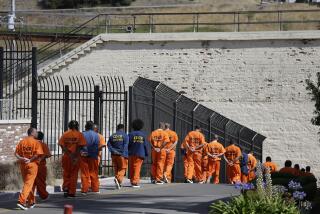‘Three Strikes’ Laws
- Share via
Scott Harris’ column, “Calling That Third Strike Against Felons” (Jan. 13), said I had “grave doubts” about “three strikes” laws. What I told him was not all against these measures, which I said would be better than the mandatory long-term penalties on first offenses that have helped to unbalance our state budgets.
I mentioned that statistically, offenders who have had an appreciable period of non-criminal life between crimes are much better risks for release than are those who, from an early age on, have been continuously in crime when not confined. I added that house arrest with electronic monitoring, community service and fines have been more effective than confinement for reducing recidivism rates of lawbreakers with few or no prior offenses.
One way to reduce crime and costs from “three strikes” laws would be not to count crimes followed by five or more years of no further convictions when free, provided the defendant’s legitimate income accounts for his or her expenditures in this period. Another way would be to permit up to the last third of prison terms to be served in halfway houses or electronically monitored parole supervision, which--if well-run--would both aid transition to law-abiding lives and permit prompt rearrest if crime is resumed. Most important would be rigorous statistical research to assess the effectiveness of such provisions.
DANIEL GLASER
Professor Emeritus, USC
More to Read
Sign up for Essential California
The most important California stories and recommendations in your inbox every morning.
You may occasionally receive promotional content from the Los Angeles Times.













